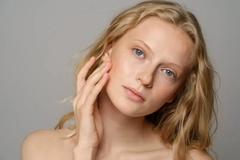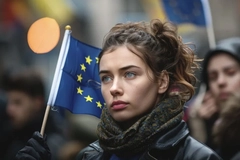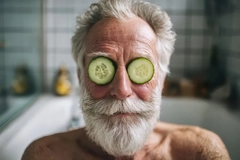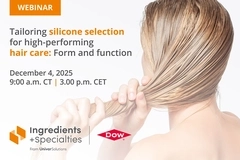Pride Month 2025: Beauty campaign drop-off sparks authenticity debate
Beauty and personal care brands are visibly scaling down their Pride Month involvement in 2025, despite LGBTQ+ visibility and consumer influence growing. The political rollback of federal Diversity, Equity, and Inclusion (DEI) policies under US President Donald Trump has triggered a corporate retreat, with fewer Pride campaigns, smaller sponsorships, and quieter marketing.
The drop-off raises questions about whether previous brand allyship was performative rather than principled.
Innova Market Insights reporting reveals that major Pride events in cities like New York and San Francisco, US, are experiencing funding shortfalls of US$750,000 and US$200,000 respectively.
Additionally, nearly two in five corporate executives report reducing their Pride engagement in 2025. This decline comes at a time when LGBTQ+ identification in the US has reached 9.3% — up from 7.6% in 2023 and nearly double the figure from 2020. Gen Z now accounts for 23% of LGBTQ+ adults, more than any other generation.
Despite the queer demographic growing, many companies are pulling back Pride Month activity, citing political pressure, risk of backlash, and budget constraints.
According to Innova Market Insights, “brands need to engage and show up in Pride campaigns to rebuild trust with young LGBTQ+ consumers.” With 35% of Gen Z shoppers choosing brands championing inclusivity, retreating brands risk losing visibility and relevance.
Personal Care Insights speaks with Nic Allum, creative and consultation director at Do the WeRQ, a US-based queer grassroots organization.
Allum tells us: “Performative marketing is short-term, obvious, and flat. June campaigns with rainbows, stereotypical imagery, and messaging, disproportionately small and temporary donations are often disconnected from internal communications and LGBTQ+ staff.”
 Corporate sponsorship for Pride parades fell sharply in 2025, with New York and San Francisco events facing funding gaps.Politics push brands into silence
Corporate sponsorship for Pride parades fell sharply in 2025, with New York and San Francisco events facing funding gaps.Politics push brands into silence
Trump’s January 2025 executive actions eliminated mandates that protected against discrimination based on sexual orientation and gender identity in federal employment and contracting.
Innova Market Insights reports that these changes have prompted companies, including beauty and personal care brands, to reevaluate or quietly drop their DEI strategies.
This shift has translated into lower Pride Month participation and fewer public statements of support. According to Innova, mentions of Pride campaigns in beauty dipped in 2025, even as the LGBTQ+ population continues to expand.
Meanwhile, Allum says brands still fall into predictable traps during Pride, including “paying ridiculous amounts of money to large reach influencers for ‘slay queen, yes sister’ posts” and “borrowing equity from LGBTQ+ creators’ personas and image for Pride month alone.”
He adds that stereotypical representation and uncontextualized rainbow branding are “tired, boring, and annoying within the community.”
In the face of growing visibility, brands that go quiet now risk appearing opportunistic or inauthentic. “Just calling something ‘Our Pride Collection’ — what are you proud of? Why? What does your collection signify?” Allum says, adding that these are the deeper questions consumers, especially Gen Z, want answered.
 Gen Z urges brands to move beyond rainbow logos, demanding year-round, authentic support for LGBTQIA+ communities.Gen Z wants year-round representation
Gen Z urges brands to move beyond rainbow logos, demanding year-round, authentic support for LGBTQIA+ communities.Gen Z wants year-round representation
According to Innova Market Insights, Gen Z is the most LGBTQ+ identifying and socially conscious generation to date, and their expectations for brand behavior go beyond seasonal support.
Innova reports that 59% of Gen Z LGBTQ+ individuals identify as bisexual and that these young consumers are “vocal, values-driven and highly engaged.” The market researcher advises brands to “show up” all year round, not June alone.
On social media, mentions of Pride beauty campaigns peaked during June and July, but Innova notes that visibility alone is no longer enough. Gen Z wants sustained commitments, inclusive hiring, accessible product design, and transparent donations to queer-led causes.
They also expect brands to challenge traditional beauty norms through gender-neutral packaging, intersectional storytelling, and platforming of queer creators year-round.
Allum urges marketers to prioritize cultural strategy over trend-chasing: “This is a deep dive into where the brand wants to sit within not just beauty culture now and into the future, but where and when the brand can actively connect with culture and people in real life.”
With 35% of Gen Z consumers choosing brands that reflect inclusivity and 21% of US beauty shoppers reporting they have noticed more brands supporting diverse identities, the call for authenticity is becoming a key metric of brand relevance and a growing expectation in an increasingly values-driven market.
Personal Care Insights previously reported on the risks companies take when their Pride initiatives are noticeably performative. Innova’s project lead for Beauty Personal Care highlighted that one risk includes “alienating the very consumers [brands] intend to support.”














